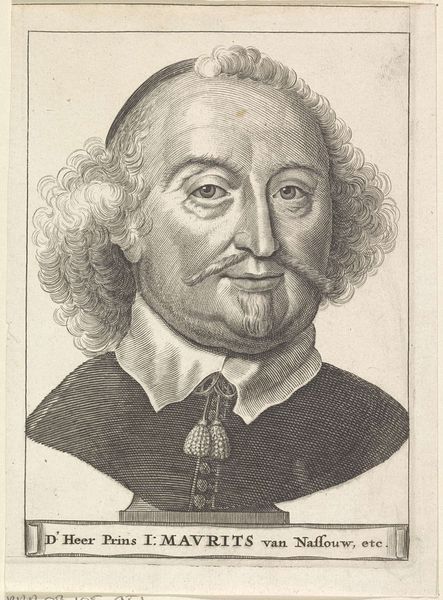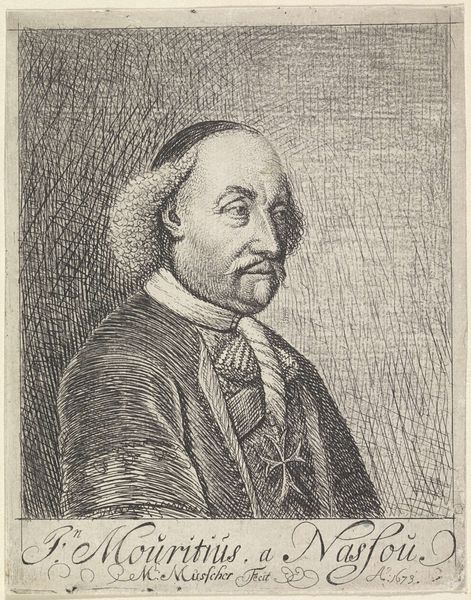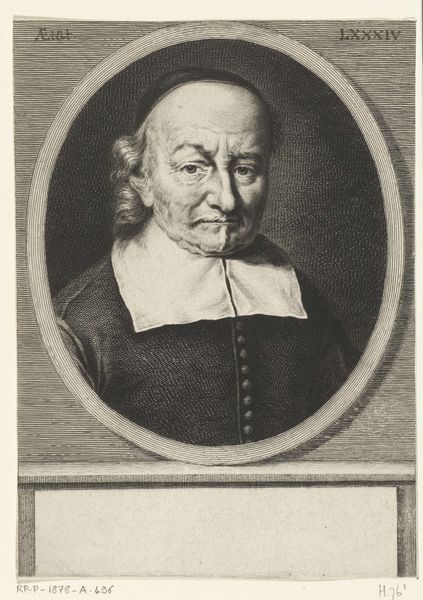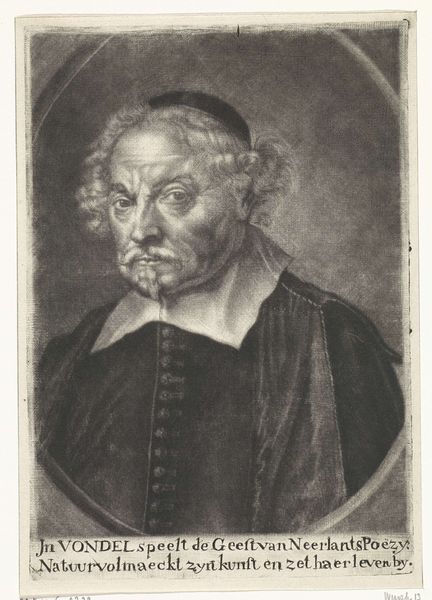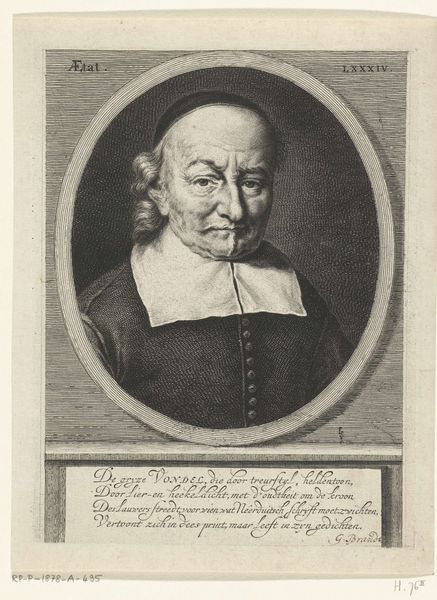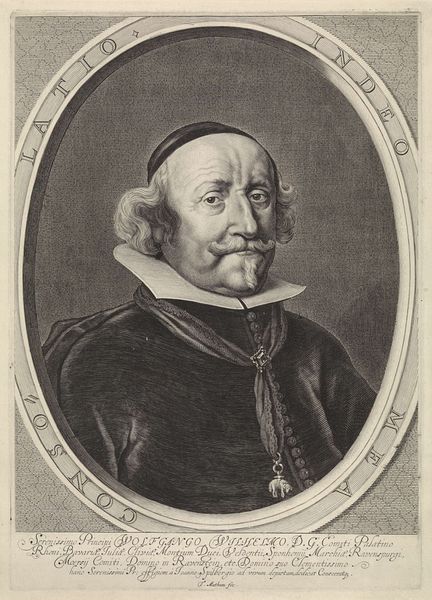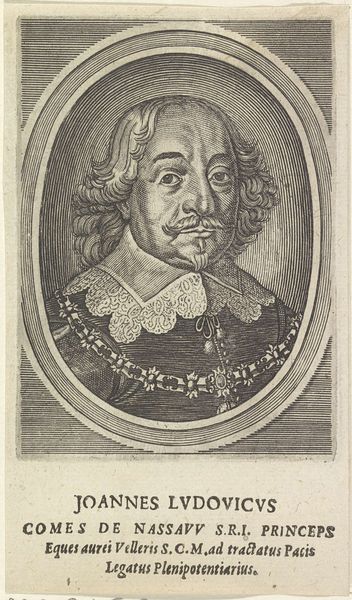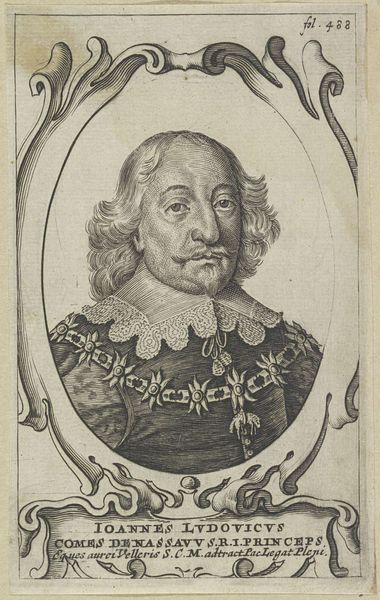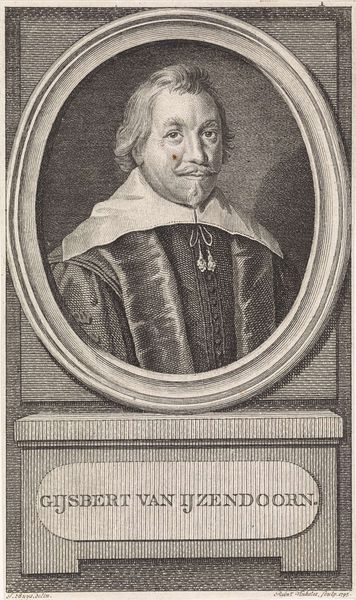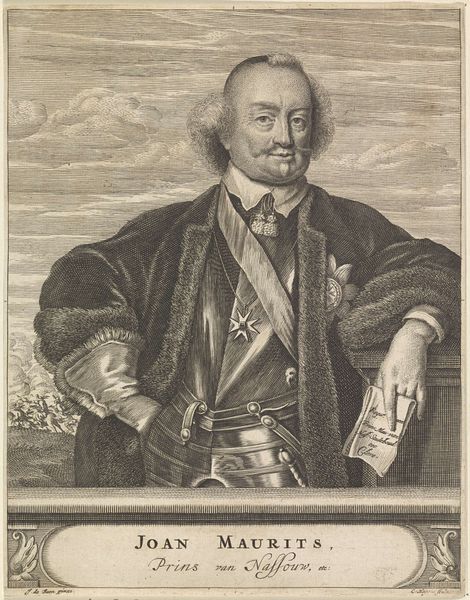
print, engraving
#
portrait
#
baroque
# print
#
engraving
Dimensions: height 127 mm, width 100 mm
Copyright: Rijks Museum: Open Domain
Editor: Here we have Michiel van Musscher’s “Portret van Joost van den Vondel,” made sometime between 1655 and 1705. It’s a rather formal portrait executed as an engraving. The sitter looks quite serious. What's your take on this print? Curator: It's interesting to consider portraits like this within the broader social and political landscape of the Dutch Golden Age. Engravings like this, widely circulated, played a crucial role in constructing and disseminating the image of important figures like Vondel, who was, of course, a very prominent poet and playwright. This isn't just about likeness; it's about establishing cultural authority. Editor: So you're saying its distribution made it powerful? Curator: Precisely. Consider who had access to such images. Prints like these became objects of collecting. They offered a way for a burgeoning middle class to engage with intellectual and cultural life, to create a sense of shared national identity through venerating its cultural heroes. Does knowing this change how you see his expression? Editor: Definitely. Knowing it could be in many hands transforms my perspective on it! Instead of a static depiction of one man, I now see the engraving as an intentional act of cultural and perhaps even political elevation. Curator: Exactly! It shows us that artistic creations always have social and political work to do! Editor: I’ll remember to always question artwork’s purpose as a cultural document rather than just an aesthetic one. Thanks!
Comments
No comments
Be the first to comment and join the conversation on the ultimate creative platform.
